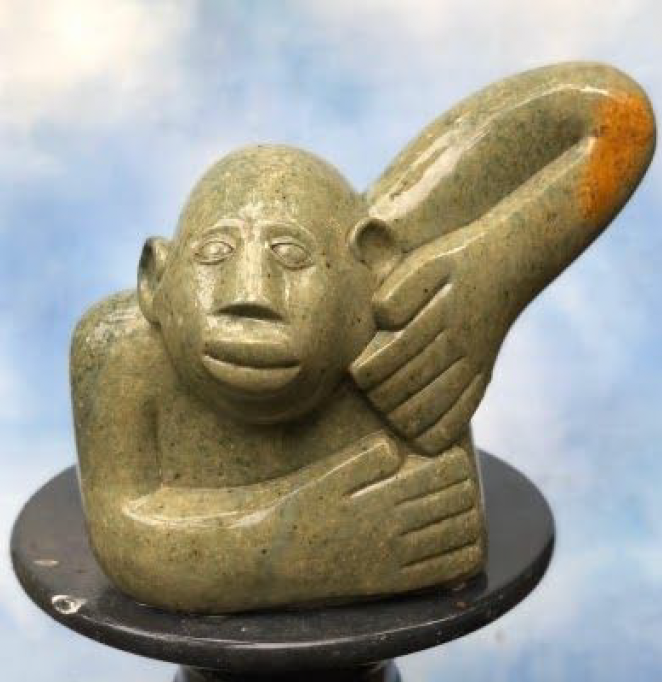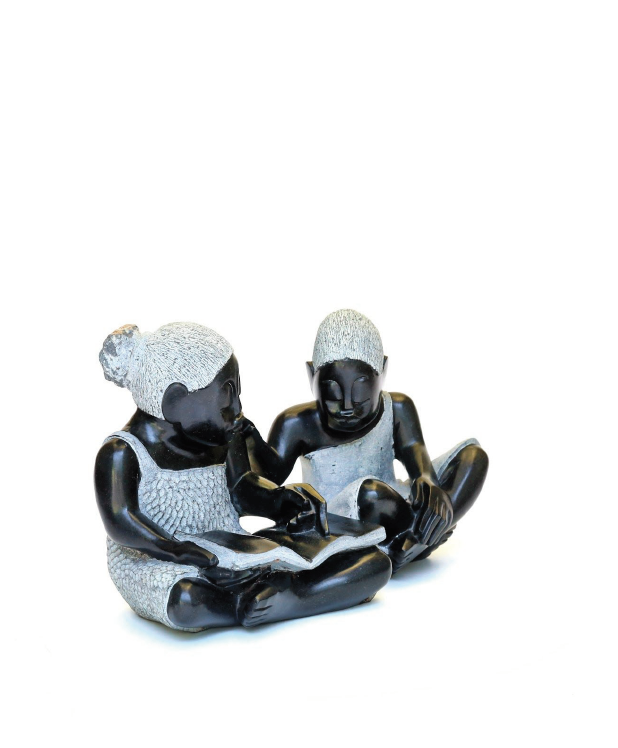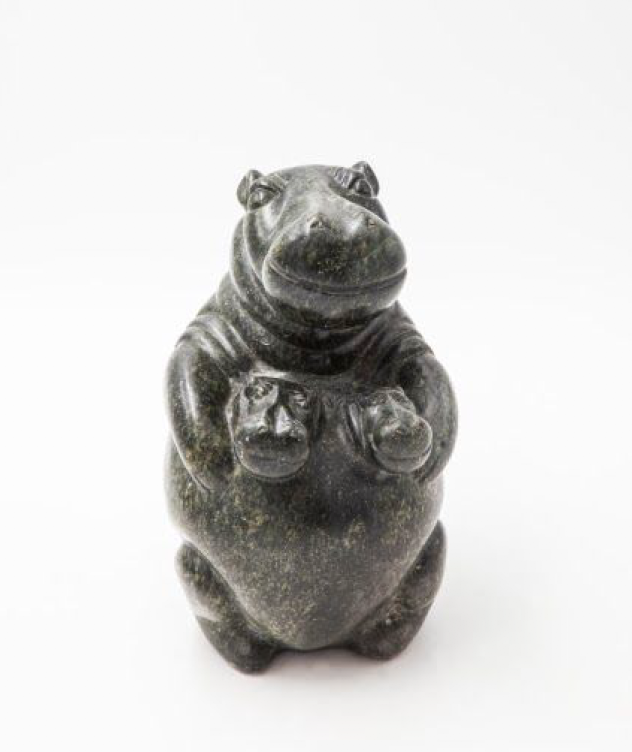First Zimbabwe sculpture for UK
 Summers Place Auctions is holding its first sealed bid auction of sculpture from Zimbabwe, with the deadline for the sealed bids on June 28, 2020. It is the first auction of its kind in the UK exclusively focusing on this African country’s artistic output. A percentage of the sale will go towards a school project in the heart of sculptor communities in MaShonaland.
Summers Place Auctions is holding its first sealed bid auction of sculpture from Zimbabwe, with the deadline for the sealed bids on June 28, 2020. It is the first auction of its kind in the UK exclusively focusing on this African country’s artistic output. A percentage of the sale will go towards a school project in the heart of sculptor communities in MaShonaland.
Whilst most of the traditional African tribal artefacts were crafted in less durable materials such as wood, Zimbabwean sculptors are unique in having access to various local stone mines over the centuries. In fact the country’s name means ‘Houses of Stone’ in the Karanga dialect of Shona and the bird on its flag was inspired by the stone-carved birds found at the heritage site Great Zimbabwe, a ruined city which was constructed in the 11th century until it was abandoned in the 15th century.
 This tradition of sculpture was re-established when the director of the National Gallery in Zimbabwe, Sorbonne-educated Frank McEwen and local farmer and miner Tom Blomfield started the Tengenenge Sculpture Community in the 1950s.
This tradition of sculpture was re-established when the director of the National Gallery in Zimbabwe, Sorbonne-educated Frank McEwen and local farmer and miner Tom Blomfield started the Tengenenge Sculpture Community in the 1950s.
Since then various villages have established themselves as centres for sculpting and it is now a tradition that is being passed on from father to son or daughter. Now in the fourth generation, it is fascinating to see how some of the first generation sculptors like Edward Chiwawa, even at the age of 85, are still sculpting and in his case his son Vengai continues the tradition.
Shona Artists
To honour the movement and to preserve the integrity of techniques crafted over generations the Shona artists continue to work using traditional tools and methodology. It also enables the sculptors to form a closer relationship with the stone they are carving, each of which have different properties. In a raw state many of the stones are very nondescript in appearance, rather like uncut diamonds but in the hands of a skilled carver the inner beauty in a myriad of different colours and natural striations is revealed. Sometimes the sculptor will leave some of the original surface of the stone providing extra textural contrasts .
Summers Place Auctions is now celebrating this phenomenon and the unique diversity of the sophisticated and powerful Zimbabwean sculpture with this online auction which includes works by three generations of sculptors including some of the most famous first generation sculptors as well as some of the most talented third generation ones and the best of the second generation artists.
As one of Zimbabwe’s most famous sculptors Edronce Rukodze, a descendant of King Monomotapa, put it, “Here in Zimbabwe we are creating a work of art in stone, a sculpture, which represents our spirit, our tribe.”
 Zimbabwean sculpture, often known as Shona Sculpture, is very popular in South Africa, the States and Canada, but still relatively undervalued and appreciated in the UK and Europe.
Zimbabwean sculpture, often known as Shona Sculpture, is very popular in South Africa, the States and Canada, but still relatively undervalued and appreciated in the UK and Europe.
As sculptors started to travel more widely, their sculptures show more influences, especially in the work of Modern British sculptors like Barbara Hepworth and Henry Moore.
Edward Chiwawa.
Edward Chiwawa, one of the oldest of his generation still sculpting was born in 1935 and learned sculpting from his cousin Henry Munyaradzi. From 1971 to 1973, Edward lived in the artist colony of Tengenenge, after that he moved to Harare. He often uses strongly abstracted, round human faces as his motive. There is a captivating magic that shines from those faces and their expression of ernst fascinates the observer and “Rising Sun Head” is a fine example of it. It is made of Springstone and 45cm high, it carries an estimate of £2,000-4,000.
Locardia Ndandarika, one of the most famous women sculptors of the first generation and often called one of the mothers of stone sculpture, learned to make clay models of animals as a young girl. She became interested in carving stone through her late husband Joseph Ndandarika, a prominent first generation sculptor of the movement seen as a local renaissance. He was, however, not supportive of women sculpting so Locardia started to sculpt secretly, burying her work in a maize field – Parrots Eternal, made of Opal stone, is 105cm high and carries an estimate of £3,000-4,000.
Nicholas Mukomberanwa is considered to be one of Zimbabwe’s most talented sculptors. Born in 1940, he got his initial art training at the Serima Mission school, and met Frank McEwen in 1962, who encouraged him to allow the natural, latent talents within the artist to emerge, with little formal guidance and ‘training’. This one element alone seems, in retrospect, the most important in the refinement of Nicholas’ ideas and ambitions. “Listening to my Lover”, made of Serpentine is 25 cm wide and estimated at £6,000-8,000.
Sylvester Mubayi was born in 1942 and joined the Sculptors Community at Tengenenge in 1967, later he was a founder member of the Vukutu Workshop School established by Frank McEwen who in 1987 said of him, “Certainly when I knew him he was by far the greatest sculptor there. I have tremendous admiration for him – some of his work is as great as anything in the world.” His work “Mary, Joseph, Angels and Wiseman” made of Springstone and is 210 cm high. With an estimate of £30,000-40,000 it is the most expensive lot in the auction.
Second Generation sculptors
 Jonathan Mhondorohuma was born in 1974 and was persuaded by his good friend Square Chikwanda to try his hand at stone carving at Tenegenenge sculpture village in 1989. After six months he moved to Harare where he met and worked under the tutelage of the late Joseph Ndandarika at the Kentucky Hotel. It was a formative period for the young Jonothan who was taught a great deal by the masterful Ndandarika. His influence can still be seen in Jonathan’s work in such aspects as composition, composure of expression and fluidity of line. “Reading a story” made of Springstone is 32cm high and estimated at £2,000 – £3,000.
Jonathan Mhondorohuma was born in 1974 and was persuaded by his good friend Square Chikwanda to try his hand at stone carving at Tenegenenge sculpture village in 1989. After six months he moved to Harare where he met and worked under the tutelage of the late Joseph Ndandarika at the Kentucky Hotel. It was a formative period for the young Jonothan who was taught a great deal by the masterful Ndandarika. His influence can still be seen in Jonathan’s work in such aspects as composition, composure of expression and fluidity of line. “Reading a story” made of Springstone is 32cm high and estimated at £2,000 – £3,000.
Other important artists of this generation included in the auction are Emmanuel Huge “Homage to Barbara” (made of Opal stone, 2m high, est. £12,000-18,000), Patrick Sephani “Mother & Daughter” (made of Opal stone, 330 cm high, est. £12,000-18,000), Tinei Mashaya “Family Harmony” (made of Springstone, 265 cm high, est. £12,000-18,000), Liberty Tshuma “Mixed Feelings” (made of Springstone, 235 cm high, est. £8,000-10,000) and Benedict Hanudikuwanda “Birds in Flight” (made of Springstone, 183 cm high, est. £6,000-8,000).
Vengai Chiwawa, son of famous first generation sculptor Edward, “Raw Beauty” is made of Springstone, 42 cm high and expected to fetch £2,000-4,000. A small work by Biggie Chikodzi “Dancing Together” (made of Opal stone, 70 cm high, est. £1,500-2,500) and a work by another female artist, Tracy Chatsama “Proud Parent” (made of Opal stone, 26.5 cm, est. £600-800).
Third Generation sculptors
 Victor Matafi was inspired by his brothers Washington Matafi and Elvis Mamvura and developed his own style. He started sculpting at a tender age and believes it is an inborn thing since many of his family are artists. He started to do his own work in 2005 in Chitungwiza Arts Centre. ” Play to your Strength” is made of Springstone, it is 224 cm high and estimated at £6,000-8,000.
Victor Matafi was inspired by his brothers Washington Matafi and Elvis Mamvura and developed his own style. He started sculpting at a tender age and believes it is an inborn thing since many of his family are artists. He started to do his own work in 2005 in Chitungwiza Arts Centre. ” Play to your Strength” is made of Springstone, it is 224 cm high and estimated at £6,000-8,000.
Clever Monera, who worked with one of the best second generation sculptors and is working in his style, and is as such very sought after, “Swing me Mama”, made of Springstone, 52 cm high, est. £2,000-3,000.
Prosper Katanda (born in 1982) “Bubbling Waves” (Springstone, 130 cm high, est. £4,000-6,000) and Tonderai Sowa (born in 1978) “Feeling that Movement” (Springstone, 19 cm high, est. £600-800). Sowa sees Zimbabwe stone sculptors as storytellers who celebrate and explore their culture as well as universal themes through their work.The young artist whose work has great emotional depth also says ” stone sculpting is a way of writing down the history of Africa in a manner that can be easily appreciated by future generations here in Zimbabwe and around the world’’.
The Shona developed sophisticated social customs and beliefs, all following one simple rule: ‘Live together and the culture will thrive’ and the Shone stone sculpture is an “expression of human connections that transcend geography and time”. It explains why these sculptures are so appealing to different cultures around the world and why the sculptors are keen to support the education of those less fortunate in their community.

